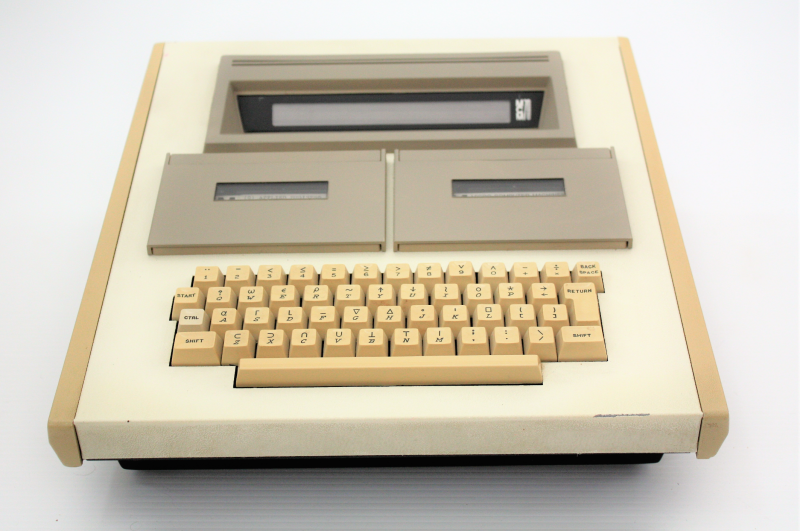
It reminds me that each country, and often each region within a country, had its own computing startups, and their products reflected the unique cultural and technological idiosyncrasies of the time and place.
Around the world
The MCM/70, produced by the Canadian company Micro Computer Machines, holds a special place in the annals of computing history as one of the first, if not the first, personal computers. Introduced in 1973, it boasted an Intel 8008 processor, 4KB of RAM, and an APL (A Programming Language) operating system: another thing I’ve never heard of before.
The MCM/70’s unique design, including a twin cassette deck and a built-in segmented LED display, reminds me of a modern cyberdeck.
It’s a pleasure to see a reproduction of this iconic machine today.
In the US, the Apple II was a revelation when it was launched in 1977. It was the first computer many Americans ever saw (here in the UK, mine was a Dragon 32). The Apple II’s role in popularizing the concept of the personal computer cannot be overstated.
I preferred the Commodore 64, with its powerful multimedia capabilities. It became a beloved home computer, and also a favourite platform for game developers. It’s still my favourite.
Moving to the UK, the ZX Spectrum and the BBC Micro were pivotal in the country’s computing history. I had a ZX Spectrum, and despite its rubbery keyboard and modest specifications, it was a revolution in the home computing market due to its affordability. The BBC Micro, on the other hand, was a staple in schools, providing many British children with their first taste of computing. Over in Japan, the NEC PC-8801 and Sharp X1 series were leading the pack. I don’t think I ever saw one until visiting computing museums as an adult. Down under, the Microbee, an Australian-built computer, had a cult following. In the Soviet Union, locally produced machines like the Agat and the Electronika BK series were reverse-engineered Western designs.
Today, the world of computing can seem homogenous, dominated by a few large corporations. A MacBook is a MacBook all over the world. We use devices with eerily similar designs and identical operating systems. But in the 1980s, computers were wonderfully diverse. They were local, they were personal.
One of the most fascinating aspects of the Raspberry Pi is its ability to emulate retro computers. This enables enthusiasts to experience the computing past first hand, and younger generations to discover the rich history of personal computing.

Schreibe einen Kommentar
Du musst angemeldet sein, um einen Kommentar abzugeben.